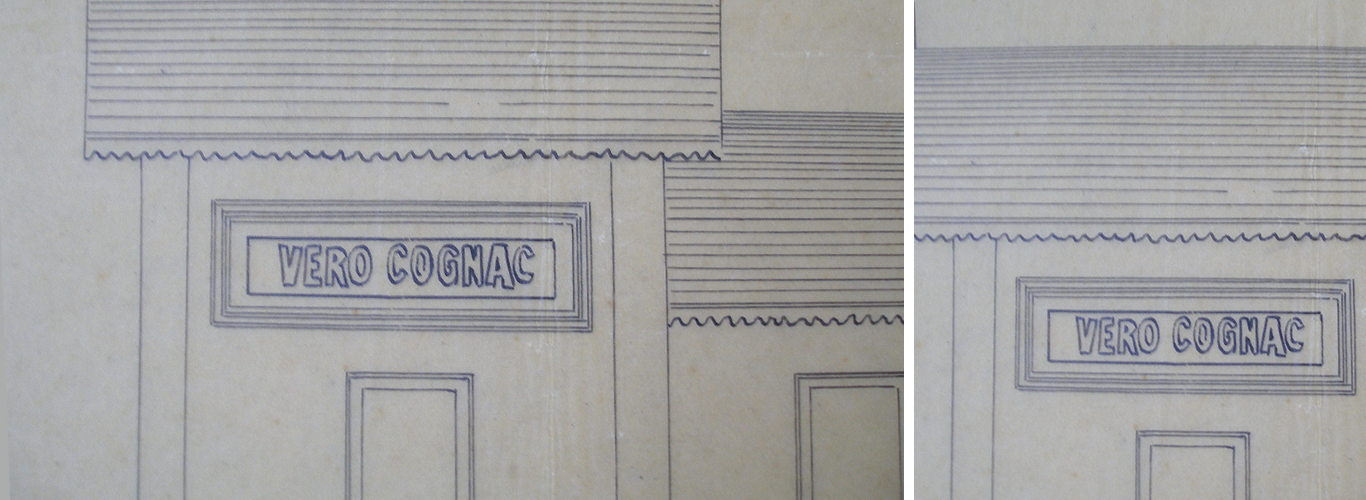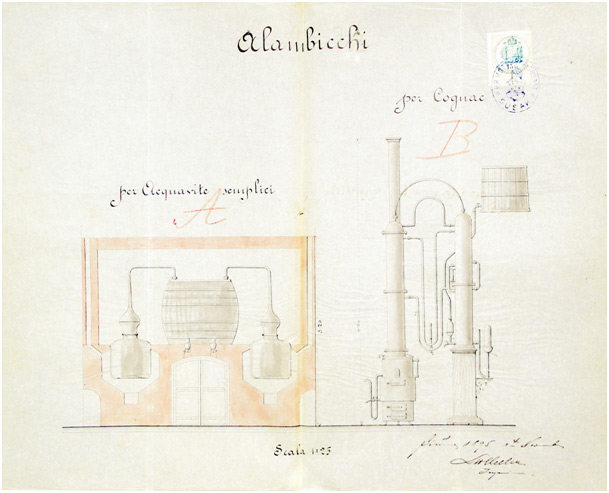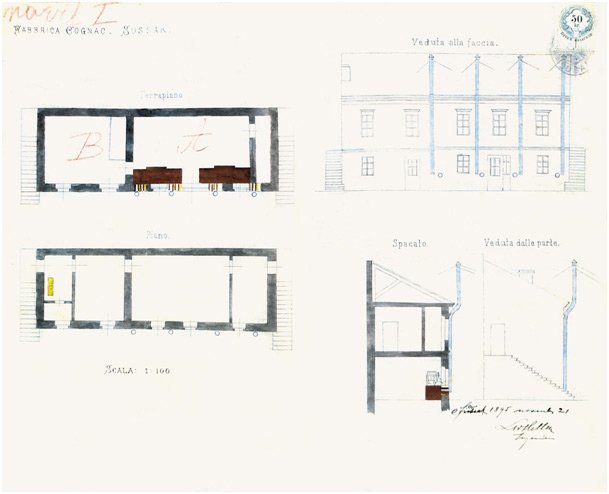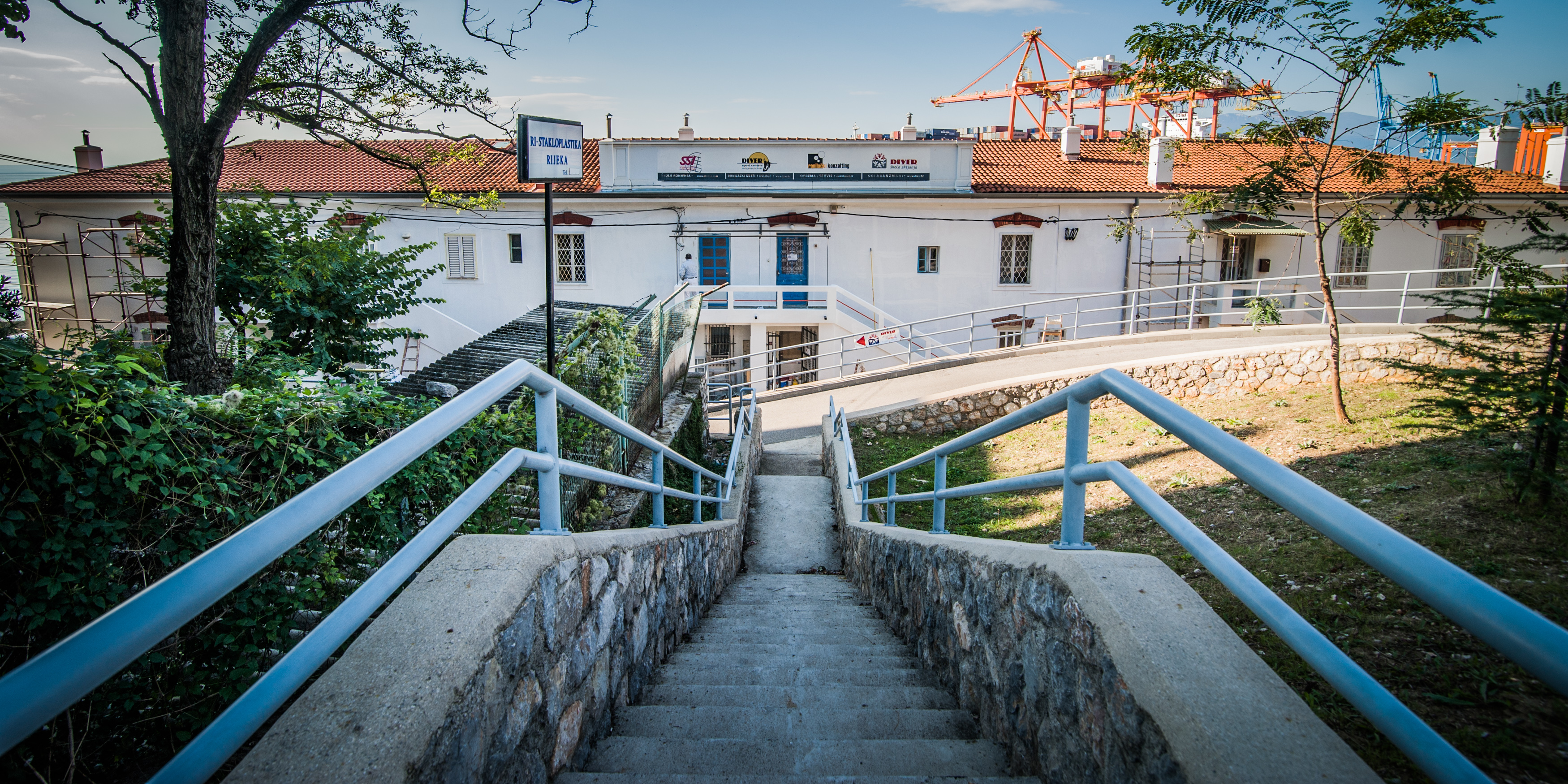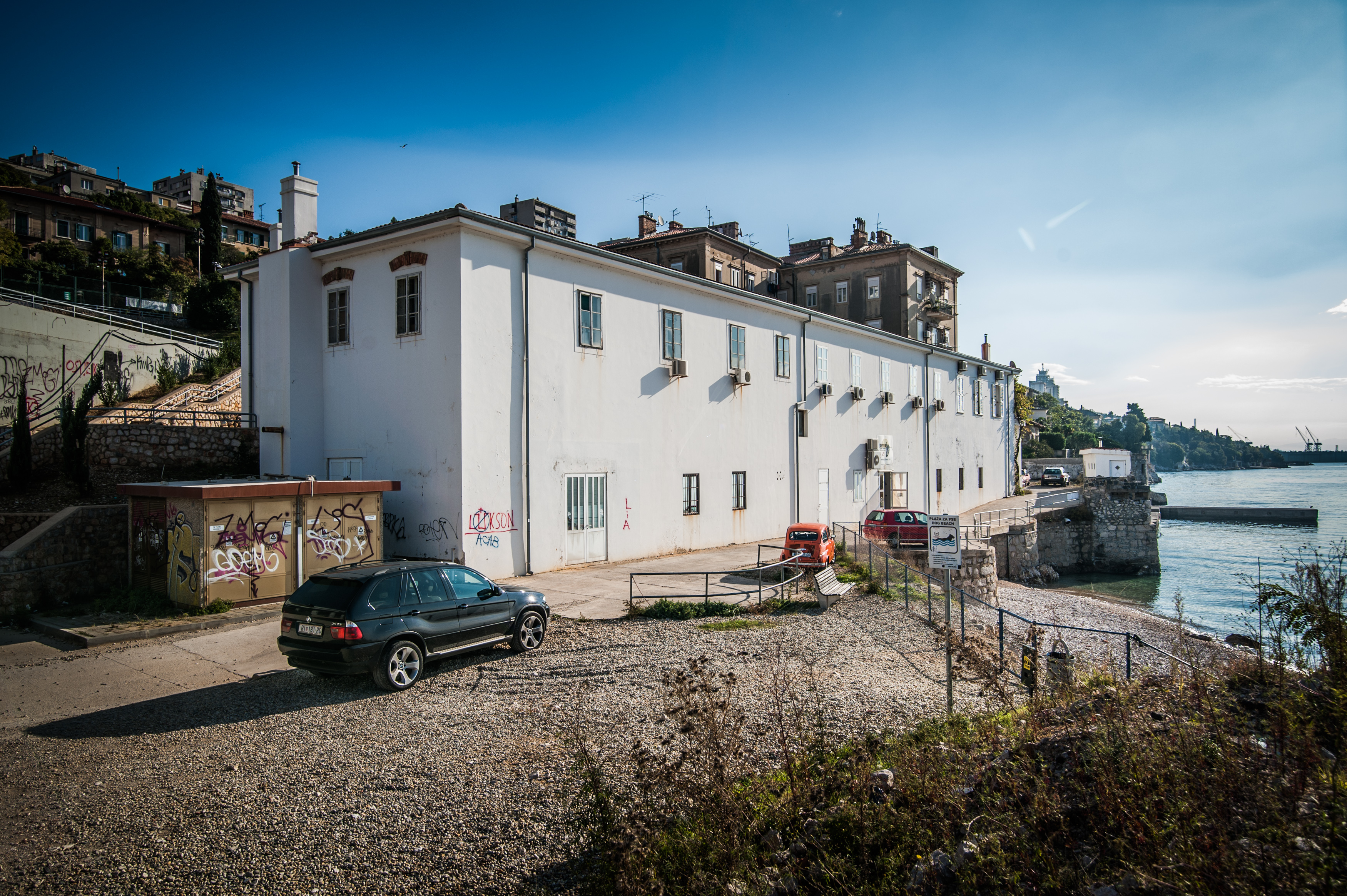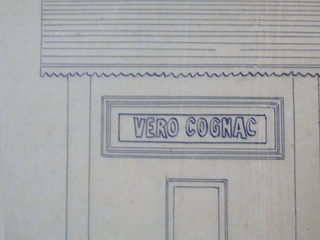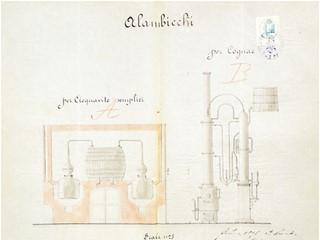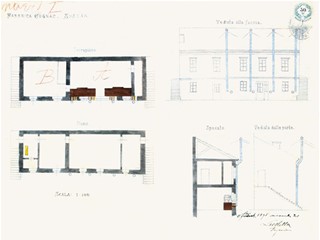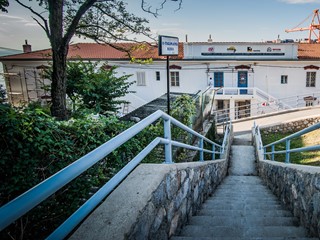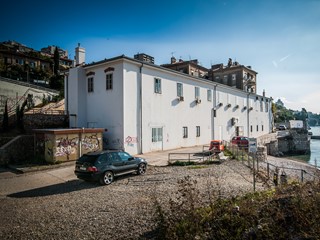Rijeka’s Brandy and Spirits Steam Plant, Smelter and Chemical Industry
address: Šetalište XIII. divizije 28Period: Historicism
Kind: Immovable material heritage
Century: 19
Year: 1895
Purpose: industrial
In 1895, the industrialist I. Csillag filed a request for the opening of Rijeka’s Brandy and Spirits Steam Plant. The entire production plant was located on the property of Eugenio Bačić, on Pećine, directly by the sea, beneath the Crown Prince Peter’s Road, today’s street Šetalište XIII divizije no. 28. Although refitted and remodelled, the facility has remained preserved to this day. It is a simple three-storey rectangular building with a series of windows and staircases on the sides. The façade is modest but impressive, architecturally moulded with window openings with brick gables and a prominent keystone. The mentioned feature is visible only on the northern facade of the building, which needed to fit into the architectural context of the adjacent buildings as regards its decoration. The facility gained its historicist looks with the above mentioned elements in 1899, when it was renovated according to the design of engineer Giovanni Randich.
It can be assumed that the factory became property of the Cosulich family, known for its shipping activity, at the beginning of the 20th century, which is evident from a Modiano commercial made for the promotion of the factory.
When we talk about the process of producing brandy, we can say that it has remained the same, the only change being the modern factory equipment applied today.
Beginning with the first decade of the 20th century, Rijeka’s Smelter occupied the same location where there was once Rijeka’s Brandy and Spirits Steam Plant. Archival documents related to the Smelter and Chemical Industry are mainly of administrative and technical nature, giving information on the operation of the Smelter and including operation licences, various drafts of the facilities and explanations of the operating mode of the industrial plant for smelting lead and copper ores. A complaint of Mrs. Pajkurić (married name Blondina) regarding the factory’s operation, dated 17 April 1913 and addressed to Sušak’s authority, informs us about the plant’s period of intensive work. She strongly objected to the toxic gases and smells emitted from the smelter. The document also states that the plaintiff intended to present these problems before the committee in charge of these issues. This shows that the location of the plant was really inconvenient, probably because the building was not originally intended for such a factory.
Valorization:
The building has been preserved in an altered form until today as a few entrances were added to the northern façade. The edifice has not been protected as a cultural good, not even by the conservators-restorers.
Bibliography:
DARI, JU49, kutija 51, 52.
Delbello, Piero, Modiano – od Trsta do Rijeke, Modiano, 2013.
Lozzi Barković, Julija, Arhitektura historicizma na Sušaku, u: Arhitektura historicizma u Rijeci, MMSU, Rijeka 2001.
Mujić, Ibrahim, Tehnologija proizvodnje jakih alkoholnih pića, Veleučilište u Rijeci, Rijeka, 2010.
Rački, Andrija, Povijest grada Sušaka, Tisak Primorskog štamparskog zavoda d.d., Sušak, 1921.

